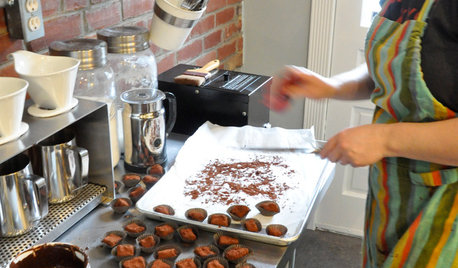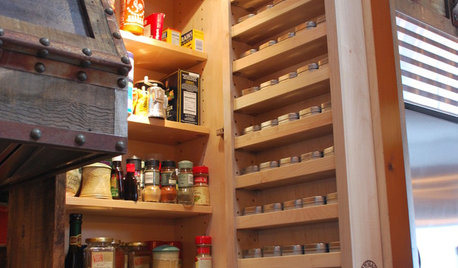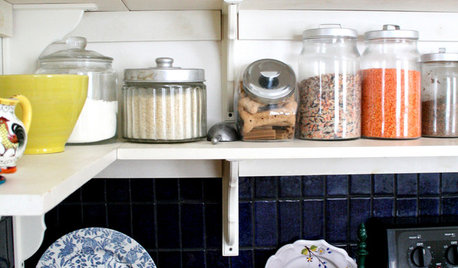2 recipes of questionable canning rediness...
danlembek
16 years ago
Related Stories

KITCHEN DESIGNKitchen Recipes: Secret Ingredients of 5 One-of-a-Kind Cooking Spaces
Learn what went into these cooks’ kitchens — and what comes out of them
Full Story
DECLUTTERINGFoolproof Ways to Declutter Your Kitchen
If you find yourself fumbling through cupboards to find what you’re looking for, it’s time to take action with these simple steps
Full Story
KITCHEN DESIGN8 Kitchen Organizing Ideas for Messy Cooks
Not the clean-as-you-go type? Not to worry. These strategies will help keep your kitchen looking tidy no matter what your cooking style is
Full Story
KITCHEN DESIGNLove to Cook? We Want to See Your Kitchen
Houzz Call: Show us a photo of your great home kitchen and tell us how you’ve made it work for you
Full Story
THE HARDWORKING HOME6 Smart Ways to Work Your Square Footage
The Hardworking Home: From Juliet balconies to movable walls, here’s how to make a home of any size feel more open, flexible and fun
Full Story
FEEL-GOOD HOMESimple Pleasures: Make Do and Mend
Experience the satisfaction of fixing, repurposing and creating things yourself around the home
Full Story
KITCHEN DESIGN7 Steps to Pantry Perfection
Learn from one homeowner’s plan to reorganize her pantry for real life
Full Story
KITCHEN DESIGNDisplaying Kitchen Supplies — Hot or Not?
Do some kitchens just beg for a cozy row of canisters and gear for all to see? Have a look and let us know what you think
Full Story
KITCHEN DESIGN20 Kitchen Must-Haves From Houzz Readers
We asked you to tell us your top kitchen amenities. See what popular kitchen features made the list
Full Story
KITCHEN APPLIANCES9 Places to Put the Microwave in Your Kitchen
See the pros and cons of locating your microwave above, below and beyond the counter
Full StoryMore Discussions






readinglady
Linda_Lou
Related Professionals
Londonderry Landscape Architects & Landscape Designers · Suffern Landscape Architects & Landscape Designers · Elgin Landscape Contractors · Barrington Landscape Contractors · Beverly Hills Landscape Contractors · Boca Raton Landscape Contractors · Coeur d'Alene Landscape Contractors · Downey Landscape Contractors · Garland Landscape Contractors · Lorain Landscape Contractors · Paramount Landscape Contractors · Wanaque Landscape Contractors · New Orleans Roofing & Gutters · Fullerton Driveway Installation & Maintenance · Riverside Driveway Installation & MaintenanceLinda_Lou
danlembekOriginal Author
readinglady
digdirt2
digdirt2
digdirt2
danlembekOriginal Author
digdirt2
readinglady
danlembekOriginal Author
gran2
zabby17